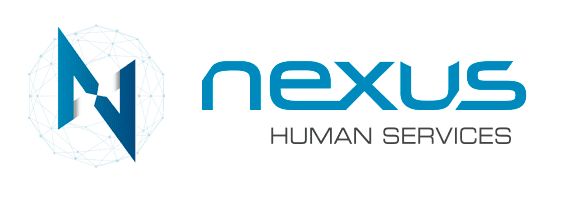In today’s competitive job market, a well-crafted resume is your key to unlocking career opportunities. For job seekers with disabilities in Australia, an outstanding resume is not just a document; it’s a tool that can empower you to showcase your skills, experience, and potential to prospective employers. In this comprehensive guide, we will explore tips for crafting an exceptional resume tailored to your unique needs and abilities.
Resume Writing Tips:
Effective resume writing begins with a clear understanding of your goals and a focus on your strengths. Tailor your resume to emphasise your abilities and how they align with the job you’re seeking.
How to Create a Great Resume:
Creating a great resume is a step-by-step process. We’ll walk you through the essential elements to include, from contact information to education and experience.
Crafting a Standout Resume:
Stand out from the crowd by highlighting your accomplishments and the unique skills you bring to the table. Craft a resume that leaves a lasting impression on employers.
Resume Design Ideas:
While content is critical, a visually appealing resume can capture attention. Discover design ideas that make your resume visually engaging and easy to navigate.
Building an Impressive CV:
Learn how to build an impressive Curriculum Vitae (CV) that presents your qualifications, certifications, and achievements in a comprehensive format.
Resume Formatting Tips:
Formatting plays a crucial role in readability. Explore formatting tips that ensure your resume is organised and easy to skim for important details.
Writing an Effective Job Resume:
Effectively communicate your qualifications and experience to potential employers by adopting proven resume-writing techniques.
Resume Content Best Practices:
Discover best practices for content creation, including the use of action verbs and quantifying your achievements to make your resume impactful.
Resume Templates and Examples:
Access templates and real-world resume examples designed for job seekers with disabilities, helping you structure your own document effectively.
Professional Resume Writing:
Consider the option of professional resume writing services, which can provide expert guidance in creating a resume tailored to your specific needs.
Resume Optimisation Techniques:
Optimise your resume for Applicant Tracking Systems (ATS) to increase your chances of passing the initial screening process.
Resume Layout and Structure:
Explore different layout and structure options to find the one that best suits your background and the industry you’re targeting.
Tailoring Your Resume for a Job:
Customise your resume for each job application by aligning your qualifications and skills with the specific job requirements.
Resume Keywords for Success:
Incorporate relevant keywords and phrases from the job description to make your resume more discoverable by employers.
Resume Sections and Components:
Learn about the essential resume sections and components, including contact information, summary, work experience, education, and additional skills.
Achieving a Polished Resume:
Review and refine your resume to ensure it is error-free, polished, and presents your qualifications in the best possible light.
Resume Writing Dos and Don’ts:
Avoid common resume pitfalls and gain insights into what to do (and what not to do) when crafting your document.
Modern Resume Trends:
Stay up to date with the latest resume trends, such as the inclusion of LinkedIn profiles, online portfolios, and social media presence.
Making Your Resume Shine:
Discover strategies to make your resume stand out by showcasing your unique strengths and achievements.
Resume Customisation for Specific Roles:
Adapt your resume for different job roles and industries, emphasising the qualifications that are most relevant to each position.
Addressing Employment Gaps:
If you have gaps in your employment history due to disability-related reasons, consider addressing them strategically. Use a functional resume format to emphasise your skills and accomplishments, rather than chronological gaps.
Showcasing Transferable Skills:
Highlight transferable skills that are relevant to the job you’re applying for. These could include problem-solving, adaptability, communication, and leadership skills that you’ve developed in various settings.
Professional Summary:
Craft a compelling professional summary at the beginning of your resume. This brief statement should encapsulate your key qualifications, career goals, and what you can bring to the role.
Volunteering and Community Involvement:
Include any volunteer work or community involvement that showcases your dedication, teamwork, and relevant skills. These experiences can help bridge gaps in your work history and demonstrate your commitment.
Networking:
Leverage your network to uncover job opportunities and gain insights into the job market. Attend job fairs, disability-focused events, and connect with professionals who may offer guidance and job leads.
Seek Professional Guidance:
Consider reaching out to organisations and career services that specialise in assisting job seekers with disabilities. They can provide valuable advice, resources, and support throughout your job search.
Emphasise Accomplishments:
Focus on quantifiable achievements in your work history. Use specific metrics, such as percentages, numbers, or dollar amounts, to demonstrate the impact you’ve had in previous roles.
Request Reasonable Accommodations:
When applying for jobs, don’t hesitate to request reasonable accommodations if needed for the application process or job interview. Employers are legally obligated to provide these accommodations under Australian law.
Highlight Continuous Learning:
Demonstrate your commitment to ongoing professional development by mentioning any relevant courses, certifications, or workshops you’ve completed. This showcases your dedication to staying current in your field.
Proofread Thoroughly:
Before submitting your resume, carefully proofread it for any grammatical or spelling errors. An error-free resume reflects your attention to detail and professionalism.
By following these resume-writing tips and strategies, job seekers with disabilities in Australia can create a powerful resume that not only reflects their abilities but also positions them as strong candidates in the job market. Your unique skills and experiences are valuable assets, and a well-crafted resume will help you unlock your full potential in your career journey.
At Nexus Human Services, we are dedicated to supporting Australians with disabilities find suitable employment that is inclusive and accessible. To see how we can help you, visit our page for Job Seekers. Alternatively, give us a call today on 1800 163 987.



